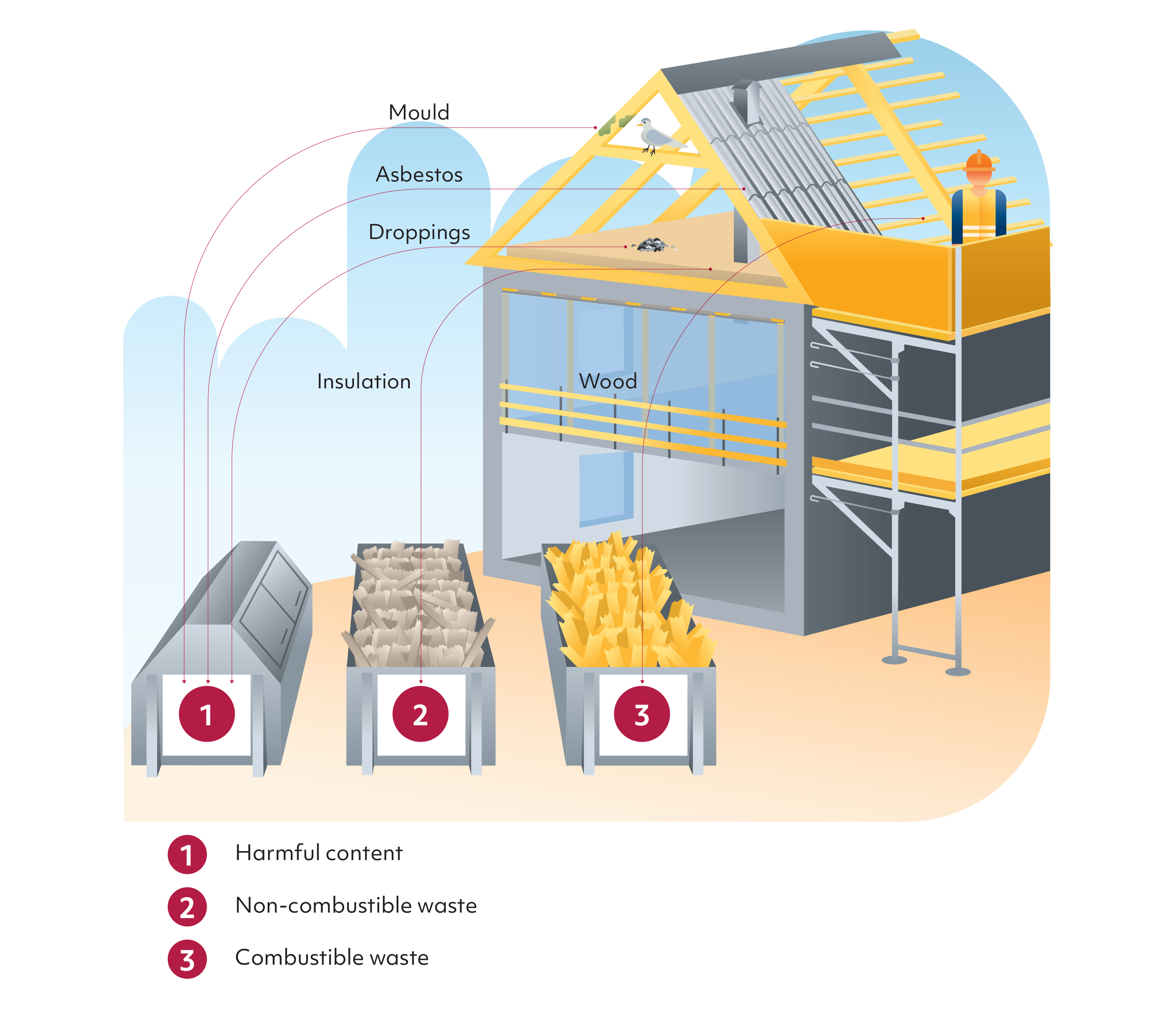People who work with demolition can be exposed to harmful dust or be injured when lifting or carrying heavy building material and waste. They are also at risk of falling from the building and of being hit by building components.
The employer is responsible for ensuring that demolition work is carried out safely. This means that you need to protect yourselves against harmful dust, use railings and scaffolding, cover holes between floor partitions, etc. You must also reinforce unstable building components and use suitable technical equipment to avoid heavy lifting and carrying.
Read below about how to work safely.
Plan work
Before you start demolition work, you must plan how you want to carry out the work appropriately in terms of health and safety. This applies regardless of whether you are to demolish a small part of a building or an entire building. For instance, it is important that you plan the sequence of the demolition, allocate the necessary time, and identify the need for safety measures.
Remove harmful material
Check the building for asbestos, PCBs, lead, pigeon droppings, mould, insulation and other material that constitutes a health risk. Then remove hazardous materials pursuant to the specific rules for the area before beginning the demolition.
Note that for asbestos work, you must have undergone compulsory training in how to handle asbestos, and that asbestos work must be reported to Arbejdstilsynet (the Danish Working Environment Authority) before commencement of work. The remaining work also requires special training and thorough instruction.
Work safely
Carry out the demolition work in a sequence that prevents you from falling from or through the building, and that prevents the building or parts of the building from collapsing. Also, make sure to protect yourselves with railings and scaffolding and by covering holes in the roof and floor partitions.
Moreover, protect yourselves against dust using ventilation, respiratory protective equipment and by cleaning with a dust class H vacuum cleaner.
Always use work methods, machinery and personal protective equipment that provide the highest level of protection against accidents, heavy lifting, dust, noise and vibration.
Separate waste and clean up
Materials and waste from demolition must be separated. Contact the municipality
regarding how to dispose of waste, including waste dangerous for the environment such as PCBs and asbestos.
Daily tidying-up, waste management and cleaning are important to avoid tripping and falling and to limit dust. 


